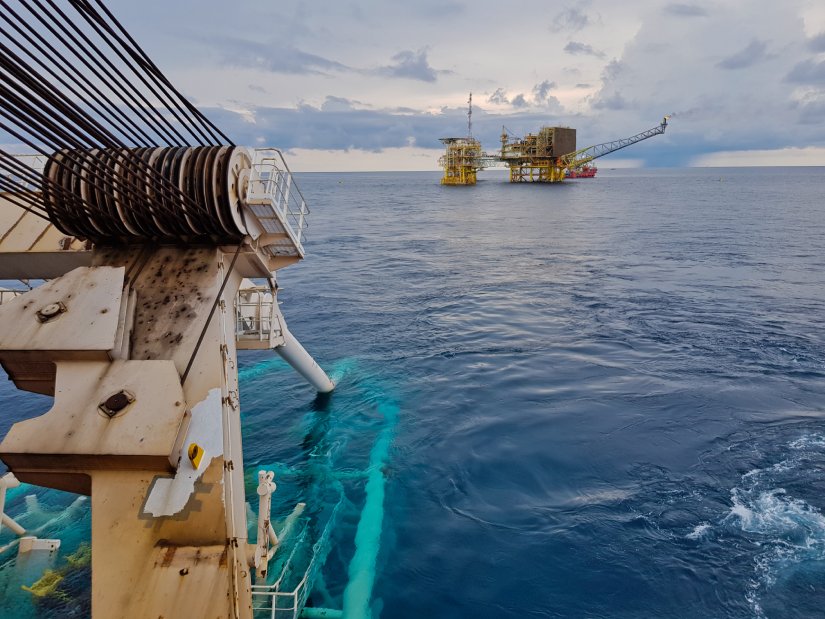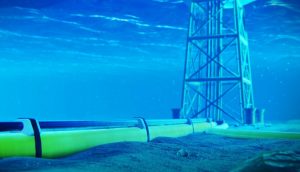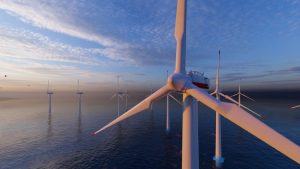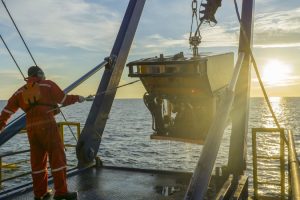Navigating the Depths of Long-Term Success in Subsea R&D
29th Aug 2023Lasting achievement in subsea R&D hinges on adopting constantly changing hi-tech improvements. Staying ahead of the game becomes paramount as we dive deeper into our waters, and by fuelling research and development (R&D) with the best discoveries, we can guarantee persistent growth. Here, we explore the utmost importance of keeping abreast of progressions that are propelling us towards thriving prospects.

In any domain, failing to keep up with the times and remaining stagnant can lead to subpar output compared to your peers, consequently causing you to fall behind. Unfortunately, the significance of staying ahead of the curve and continuous education on the latest breakthroughs often goes underestimated and is a primary cause of several firms becoming irrelevant, which, naturally, is undesired.
Welcoming a Fresh Perspective
Encouraging reports are on the horizon for prospective STEM employers in the UK, especially considering the previous skills shortage. According to the UK Government, a notable increase in the number of students choosing STEM subjects has been witnessed. In fact, in 2011, a record number of students opted for careers in Science, Technology, Engineering, Arts, and Mathematics [1], which is welcome news to many veterans in these professions.
 In the subsea sector specifically, corporations such as the Global Underwater Hub (GUH) are leading the field with initiatives like their STEM Challenge, providing inspirational and hands-on sessions for youngsters to gain an amplified understanding of the subjects of study. What’s more, GUH’s recent edition of their in-house magazine (May issue) speaks highly of new learning facilities, graduate programmes, and a new era of talent [2], demonstrating a substantial shift in new-gen personnel.
In the subsea sector specifically, corporations such as the Global Underwater Hub (GUH) are leading the field with initiatives like their STEM Challenge, providing inspirational and hands-on sessions for youngsters to gain an amplified understanding of the subjects of study. What’s more, GUH’s recent edition of their in-house magazine (May issue) speaks highly of new learning facilities, graduate programmes, and a new era of talent [2], demonstrating a substantial shift in new-gen personnel.
This positive trend offers additional alterations as a new wave of forward-thinking innovators are set to join the labour force globally. Plus, as the UK strives to achieve its zero emissions pledge, new frameworks will play a significant part in supporting greener practices, bringing about sector-wide higher requirements. Suffice it to say, a new generation of well-trained and permanent talent is very much welcomed – from engineers, researchers and divers to project managers and technicians.
Of course, change takes time, and radical shifts should not be expected immediately. However, there are assuring predictions about upcoming inventions. But before delving into those, let’s assess our current scenario.
Today’s Trends
Digitisation has been a game-changer for the subsea sector, revolutionising the way submersible activities are conducted. The introduction of digital technologies, which gained momentum in the late 20th and early 21st centuries, has led to increased efficiency, enhanced safety, and optimised problem solving. By integrating sensors, cameras, and communication tools, subsea equipment can transmit live statistics to operators onshore.
 This has reduced the necessity for diving professionals in dangerous settings, lowering hazards and operational costs. Furthermore, the use of big data has enabled better asset performance optimisation, predictive upkeep, and accurate planning for projects. As a result, digitisation has played a pivotal role in unlocking new possibilities for below-water exploration, repairs, and resource extraction, pushing the boundaries of what was once deemed possible in the deep of our oceans.
This has reduced the necessity for diving professionals in dangerous settings, lowering hazards and operational costs. Furthermore, the use of big data has enabled better asset performance optimisation, predictive upkeep, and accurate planning for projects. As a result, digitisation has played a pivotal role in unlocking new possibilities for below-water exploration, repairs, and resource extraction, pushing the boundaries of what was once deemed possible in the deep of our oceans.
Akin to technology-dependent industries, the subsea sector is experiencing a surge in innovative trends.
Among these advancements are:
- Autonomous Underwater Vehicles (AUVs) and Unmanned Underwater Vehicles (UUVs) that operate independently.
- State-of-the-art imaging for underwater assessments.
- Analytics-based digital twin technologies to replicate environments, like pipelines and platforms.
- The incorporation of robotics and manipulators.
These cutting-edge methods are spearheading a radical revolution.
Future Trends
Looking ahead, the subsea sector is poised to place a spotlight on energy and renewables, motivated by worldwide net-zero commitments and a discerning eye on ‘greenwashing’ made by major brands.
 With its close bonds and given the renewable energy harvesting opportunities offered by the ocean, the sector is set to become more efficient and adept at meeting growing demand. This pursuit will fuel universal teamwork, resulting in remarkable strides, including greater integration of Artificial Intelligence (AI) and analytics for real-time data processing, servicing, and intelligent decision-making. Virtual Reality (VR) and Augmented Reality (AR) will also find further applications in training, inspections, and maintenance,
With its close bonds and given the renewable energy harvesting opportunities offered by the ocean, the sector is set to become more efficient and adept at meeting growing demand. This pursuit will fuel universal teamwork, resulting in remarkable strides, including greater integration of Artificial Intelligence (AI) and analytics for real-time data processing, servicing, and intelligent decision-making. Virtual Reality (VR) and Augmented Reality (AR) will also find further applications in training, inspections, and maintenance,

enhancing procedures and safety. Moreover, automation will take centre stage, with Autonomous Underwater Vehicles (AUVs) and Unmanned Underwater Vehicles (UUVs) taking on more complex tasks, guided by advanced AI and machine learning algorithms, minimising the need for constant human supervision.
As these developments unfold, optics will be utilised in an array of new and improved devices and instruments, elevating subsea systems into highly sophisticated levels of functionality.
A Joint Effort
Collaboration, partnerships, and sharing expertise are key drivers of enduring achievement in any sector. The rapidly evolving landscape presents numerous obstacles and opportunities that no single company can tackle alone. Hence, it’s imperative for businesses and regions alike to unite, foster collaboration, share knowledge, pool resources, and invest in R&D efforts. By building strong networks of cooperation, we can accelerate progress and secure a prosperous tomorrow for the industry.

Organisations like GUH serve as the perfect platform for industry players, research institutions, and government bodies to come together, exchange ideas, and collectively work towards sustainable solutions. As a proud member of GUH, we have experienced first-hand the immense benefits that sector-specific associations offer, such as leveraging each other’s experience, reducing duplication of efforts, and accelerating the pace of innovations.
Tackling Problems and Vulnerabilities
 While the future of the subsea industry looks promising, inevitably, it is not without its challenges and risks. As the tech evolution continues, there will be fears related to data security, privacy, and cyber threats. Enterprises must invest in robust cybersecurity measures to protect critical information and infrastructure from malicious attacks.
While the future of the subsea industry looks promising, inevitably, it is not without its challenges and risks. As the tech evolution continues, there will be fears related to data security, privacy, and cyber threats. Enterprises must invest in robust cybersecurity measures to protect critical information and infrastructure from malicious attacks.
Additionally, as automation and AI become more prevalent, there may be worries about potential job displacement among members of staff. It will be essential to address these concerns proactively by reskilling and upskilling the existing employees, ensuring a smooth transition into the new era of operations.
The subsea industry stands at the cusp of a transformative era driven by advancements and an international commitment to sustainability. To ensure long-term success in R&D, companies must be proactive in embracing emerging technologies, fostering collaboration, and addressing challenges. This journey will be fueled by an inclusive workforce, where new talent is nurtured and existing employees are upskilled.
FOOTNOTES: